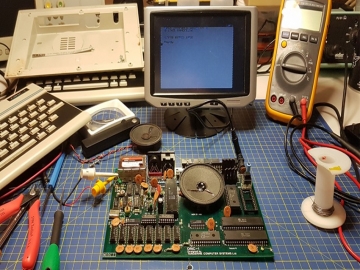How to correctly import MES systems into PCBA electronic processing plants?
How to correctly import MES system into PCBA electronic processing factory?
In recent years, with the rise of digitalization, intelligence and other concepts, more and more enterprises have come into contact with and realized the importance of MES (Manufacturing Execution System). Many electronics companies try to realize the transformation of enterprises from extensive management to refined management in one step through the introduction of MES, and fantasize about "updating and iterating" overnight. As everyone knows, due to the lack of the basis for the survival of MES, the introduction of MES not only can not achieve the predetermined goals, on the contrary, because the MES project requires department coordination, business reorganization, and full participation, it not only affects the normal production, but also hits the confidence of employees, and in the end there is no result of personnel loss and property loss.
1. Correctly import the MES system
In November 1990, the Advanced Manufacturing Research Center (AMR) of the United States officially proposed the concept of MES (Manufacturing Execution System). In 1997, MESA proposed 11 functional components and integration models of MES (Figure 1), and after counting many successful MES projects, the average benefits that can be achieved by implementing MES are obtained.
2. Realize the improvement of enterprise capabilities with the help of MES
In fact, MES, as a means and tool of informatization, does not have the function of improving enterprise capabilities. What can really help enterprises improve their capabilities is to transform and optimize the production and operation process according to the characteristics of the industry and their own advantages in the process of MES introduction, and build production management capabilities that match MES.
3. Basic conditions for the implementation of MES
——Rhythmic production mode
Through the transformation of the production line to the rhythm of production, the enterprise is driven to standardize operations, balanced production, just-in-time material procurement/distribution, total quality management, exception management, and automation. When an enterprise can achieve a certain degree of rhythmic production, it means that the enterprise has the basic conditions for the implementation of MES. On this basis, through the introduction of MES, the original manual methods (task issuance, start-up/report, working hours statistics, quality inspection, and quality traceability) are replaced by information technology, so as to further realize the timely, accurate and rapid transmission of information. At the same time, with the help of computer quality analysis, anomaly analysis, working hours analysis and other rapid statistical analysis and display functions, it is easier to find on-site problems, promote on-site improvement, and improve the level of production management through PDCA cycle.
MES is gradually formed with the continuous development and innovation of production management. Therefore, the introduction of MES is not a one-time operation, and it needs to be implemented step by step in modules and workshops, with "not adding valueless actions" as the first principle.
For the plan management module, there are three forms: manual scheduling, semi-automatic scheduling, and automatic scheduling.
Program Management Module
1. Manual scheduling: The system is mainly responsible for the review and issuance of the plan and other information transmission tasks, and the planner can issue the plan according to the actual situation.
2. Semi-automatic scheduling: the order delivery time is relatively stable, the scheduling algorithm is relatively fixed, and the yield rate is high.
3. Automatic scheduling (advanced planning and scheduling): Mainly for the production mode with complex data logic, cumbersome constraints and large-scale (the correct results cannot be quickly obtained by manual labor), it is necessary to clearly distinguish various constraints, and the parameter values of each constraint need to rely on a solid management foundation to extract, stabilize and improve.
Plan Execution Module
1. Whether the key parts should be error-proof, whether the key process parameters should be prompted, and whether the work instructions should be displayed with the work order need to be designed and optimized in combination with the actual operation.
2. If there is no demand for the content in the actual management, and the design is only designed from the universality or with reference to the application cases of other enterprises, it will lose the auxiliary role of the operation itself and lack practicability.
For the exception management module, the system generally provides exception reporting, processing, and analysis functions. In practical application, enterprises are required to establish an exception handling system and assessment requirements first, and only the actual abnormal system has played a role, and the system can be further solidified and improved after being introduced, otherwise the module will only increase the burden on workers.
For the quality management module, it generally includes material inspection, work-in-process inspection, product inspection, as well as product defect entry, processing functions, and automatic integration of testing equipment.
Quality management within the scope of the MES
MES can achieve in-process control and post-event inspection in the quality management module. If enterprises want to truly improve product quality, they also need to combine multiple dimensions of product research and development, production technology, and manufacturing process to make more efforts in quality planning and pre-prevention. Relying only on information systems cannot solve the problems of production management and production operation.
For the equipment management module, it generally includes the basic file of the equipment, the planning and execution of spot check/maintenance, the fault report and the processing function. For the import of this module, one issue is often overlooked, which is the purpose of device management.
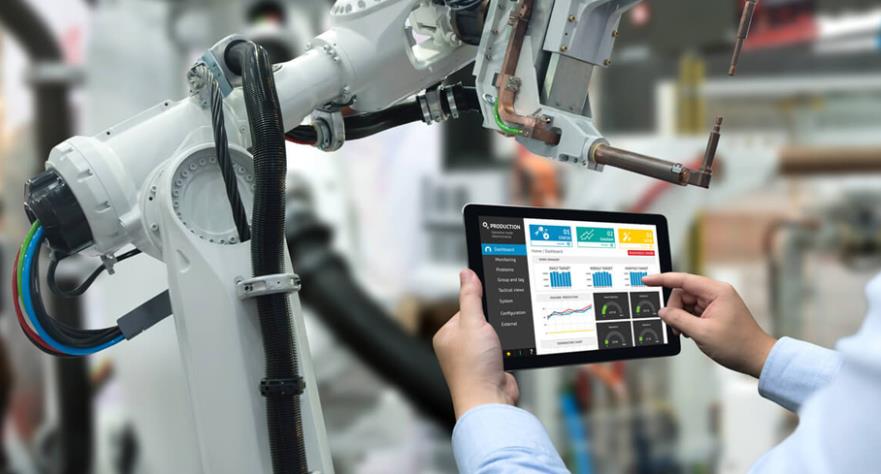
The purpose of device management
1. The ultimate purpose of equipment management is to serve production planning and production execution. Through the planning and management of equipment, the scheduling results are more accurate;
2. Through the inspection and maintenance of the equipment, the production quality is guaranteed. On this basis, the introduction of this module is necessary and practical.
In short, the requirements of MES are derived from the actual production management requirements. Only when the enterprise first has a certain management foundation and demand base, can the introduction of MES give full play to its true value.
Fourth, the application of MES in the transformation of enterprise production management
Build the production and operation capabilities of the enterprise through lean management; Replace the repetitive labor of workers through automation means and improve the quality of the process; On this basis, with the help of informatization, digitalization and intelligent means, we will further tap the potential of enterprises and enhance their competitiveness.
Compared with developed countries, a large part of our current enterprises, production management is still in the stage of extensive management, lack of basic conditions for the implementation of MES. However, due to the increase in market pressure, enterprises have to hope for the introduction of MES to accelerate the improvement of enterprise competitiveness. In the face of such a dilemma, in the process of MES introduction, the top leaders of enterprises should put more energy on the problem of "matching MES with basic management". Identify the main management problems that affect the development of the enterprise, and introduce the corresponding MES components while optimizing the management, solidify and improve. With the improvement of management capabilities, upgrade or adjust the MES function again to match the improved management and operation capabilities. The cycle repeats itself, so that the management ability and technical means are continuously optimized and improved.
The problems within the enterprise are usually intricate, and the production problem is often the last link in the chain of enterprise problems. This has also led to the transformation of enterprises' demand for MES from the original "single workshop" demand to the demand for "the whole value chain solution from sales, R&D to production and delivery". This transformation not only requires MES manufacturers to have the corresponding enterprise management knowledge and horizontal system integration capabilities, but also requires enterprise managers to correctly understand their own problems, gradually solve enterprise problems in stages and difficulties, and realize the overall improvement of enterprise competitiveness.
Finally, in the process of MES implementation, it is necessary to pay attention to the tailoring and transformation of MES functions according to the management needs of the enterprise itself, and focus on the issues that have a significant impact at this stage. Do not blindly pursue "big and complete, more the merrier".
The MES system is a production management system with scheduling as the core and a very complete function, and all the basic data required by it can be generated and maintained within the MES system. However, MES users generally need to use the MES system and the ERP system at the same time, and the connection of the two software in terms of data and function will bring the greatest benefits to the user. In this article, we will introduce how the MES system can be connected with other software according to the direction of data transfer, "from ERP to MES" and "MES to ERP", so that users can get the maximum benefit.
Data transferred from ERP to the MES system
1. Material information
Among all the basic data of the MES system, material information, including material code, name, unit, cost, etc., is very important and has a lot of maintenance workload. This part of the data should normally be generated and maintained in the MES system, but enterprises that have implemented ERP will think that these data have been stored in the ERP system and do not need to be entered and maintained again. Importing material data directly from the ERP system into the MES system is of course a convenient and feasible method. However, the MES is very meticulous in the management of production materials, which is different from the requirements of inventory and BOM-MRP modules. Users will find that many of the production intermediates required by the MES system have never appeared before in the ERP system, so it is also necessary to maintain the materials in the MES system. And some of these materials, such as office supplies, are also not required by the MES system. This requires the MES system to have the function of screening materials in the ERP and assuming new materials.
The solution of the MES system is to first introduce all ERP materials into a standard bill of materials of the MES system, and the user can also directly add the required materials to this table, and then through the selection of these materials, the materials required for production are introduced into another final production bill of materials. In addition to the initial data maintenance, the user's daily addition, modification and deletion of materials in the ERP system also need to be reflected in the MES production materials at the same time, and this "synchronous" process requires the necessary secondary development of ERP software.
2. Procurement arrival information
In the process of scheduling calculation, the MES system needs the estimated inventory quantity of extracted materials to ensure that the supply of raw materials meets the production demand. It should be noted that this estimated inventory quantity is fundamentally different from the inventory quantity provided by the ERP inventory module. The goal of an MES system is to make a plan for the "future", so what it needs is a future, projected amount of material in stock; The ERP Inventory module, on the other hand, provides both "previous" and "current" material quantities. In order to obtain the future inventory quantity, the MES system needs to obtain the estimated arrival quantity and time of raw materials, which would have been manually entered in the MES system, but if the user has implemented the procurement module of ERP, these data can be obtained from the purchase order information.
In this regard, the MES already has the function of reading the relevant information of the ERP purchase order and importing the future inventory into the MES system. This requires data tables related to purchase orders in the open database of the ERP software.
3. Sales order information
When the MES system is doing the scheduling, "what time does it need first?" What to produce? How much is produced? Such information. This information is generally stored in the sales order in the ERP system, or in the main production planning module. In addition to manually re-entering this information in the MES system, you can also directly take this information from the ERP system, and after processing, you can directly issue the production schedule and get the specific production plan.
Sum up
The data obtained by MES from ERP is mainly basic data such as materials, procurement, and sales. These are the most basic data in production management. It should be noted that some other basic data, such as process, process time, logical relationship, production resources, etc., are not available in any ERP, and must be regenerated in the MES system, which is determined by the uniqueness of the theory and method of the MES system. For enterprises, the preparation of these basic data is also the process of standardizing and improving the production management of the enterprise itself.
Data transferred from the MES to the ERP system
1. Material requirements planning
The material requirement planning provided by the MES system is fundamentally different from the material requirement planning provided by the traditional BOM-MRP method. First, it meets the requirements of production capacity constraints, multiple production constraints, and optimized production scheduling to improve work efficiency. Second: it has detailed time information down to the minute. This data is provided to the ERP and can greatly improve the management level of the purchasing and inventory modules.
Procurement module: The accurate material requirement planning of MES is an important basis for procurement work, which is linked to the original procurement lead time, supplier information and price management of the procurement module, so that enterprises can get a more accurate and optimized procurement plan. This procurement plan will directly reduce the inventory of raw materials for production.
Inventory module: The detailed material requirement planning of MES will directly generate inventory inbound and outbound documents in the ERP module, and the documents have detailed information such as variety, quantity, time, and plan number, which greatly reduces the workload of the inventory module, and also improves the planning accuracy of inventory, making inventory management more scientific and standardized.
2. Finished product output plan
The material planning of the MES system generates both demand and output planning. The finished product output planning of MES is characterized by the same constraints as demand planning and is accurate to the minute, so that companies can develop detailed and precise sales plans, transportation plans, etc., which is of great significance to improve the level of these modules.
In addition, the powerful production decision support function of MES allows sales staff to get information such as which production can be completed at what time and whether the production capacity of the enterprise can accept a certain order in the shortest possible time, and directly links the sales work with the production capacity of the enterprise.
3. Cost planning and cost allocation data
The MES system automatically generates a production cost plan based on the production operation plan, as well as the material cost and resource cost per unit time. The MES system can also allocate the cost to each process according to the actual production execution data to obtain the actual incurred cost. Together, this information is passed on to the finance module to improve the cost management function of finance.
4. Detailed operation plan (process plan) and personnel salary, equipment management, and quality management
Because MES produces a detailed operation plan or process plan, and therefore produces a plan of production resources, and each process contains a lot of information, it may be associated with certain personnel and salary management; It may also be associated with resources such as equipment and teams; It may also be linked to quality management, etc. With the job plan, the ERP can improve the management of these modules. The specific functions and methods should also be linked to the needs of the actual users and the ERP software.
5. MES plan and leadership inquiry
The large amount of information contained in the ERP module supports the multi-faceted query statistical analysis of the enterprise purchase, sale, inventory, and finance by the leadership query system, but lacks the relevant information for production management. The MES system can add the most critical production-related queries to this function, including how, and when which production can be completed. When, what and how many raw materials are needed? Which resources are the key and bottleneck resources that constrain current production? When can it be delivered? Is it acceptable for a user to place an order? Is the current production in line with the plan, and are there any exceptions? and so on. This information, which was previously impossible to talk about in the ERP system, can be obtained from the MES system within a few minutes and reflected in the relevant modules of the ERP.
The MES system only needs to obtain relatively simple basic data from ERP, but provides a lot of critical information to ERP. This information has been lacking, which can help many modules of ERP, such as procurement, sales, cost, equipment, quality, and leadership inquiry, to greatly improve their functions, and directly improve the level and grade of ERP software.
epilogue
At present, MES projects are still mainly customized by enterprises. With the improvement of the production management level of enterprises, the application of MES is constantly expanding and enriching. Even MES manufacturers who claim to have been productized, due to the special management mode and living environment of the enterprise, in the process of MES introduction, a large number of development adjustments must be made according to the production level, management needs, and usage habits of the enterprise.
Enterprise managers should not be limited by the established MES product functions to explore the needs of the enterprise, nor should they try to find an MES solution once and for all (unchanged in the next 10 years). Only MES that conforms to the management ability of the enterprise is the most suitable and the best.
Tags: PCBA /MES_systems /MES /electronic /
Prev: What are the common testing equipment for PCBA process?


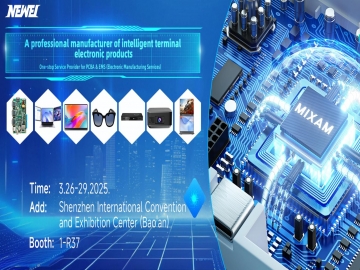
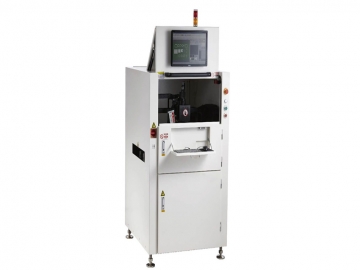
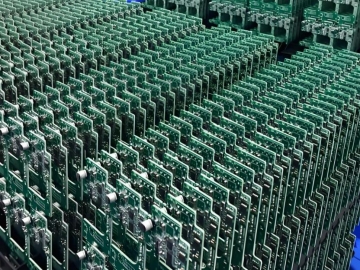
![What is the difference between PCBA and PCB? [Chart Explanation] What is the difference between PCBA and PCB? [Chart Explanation]](https://www.neweiodm.com/uploadfile/2024/0622/thumb_360_270_40266a5f71ff59f.png)
